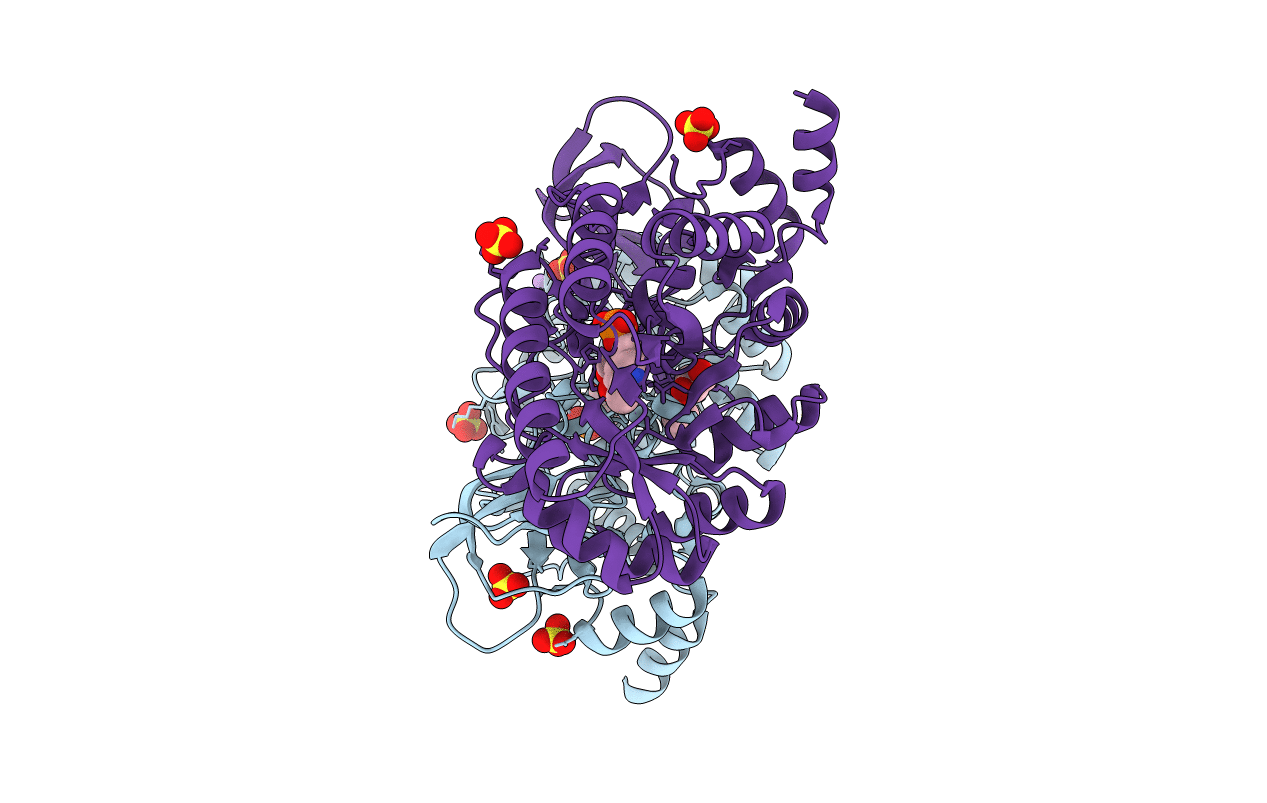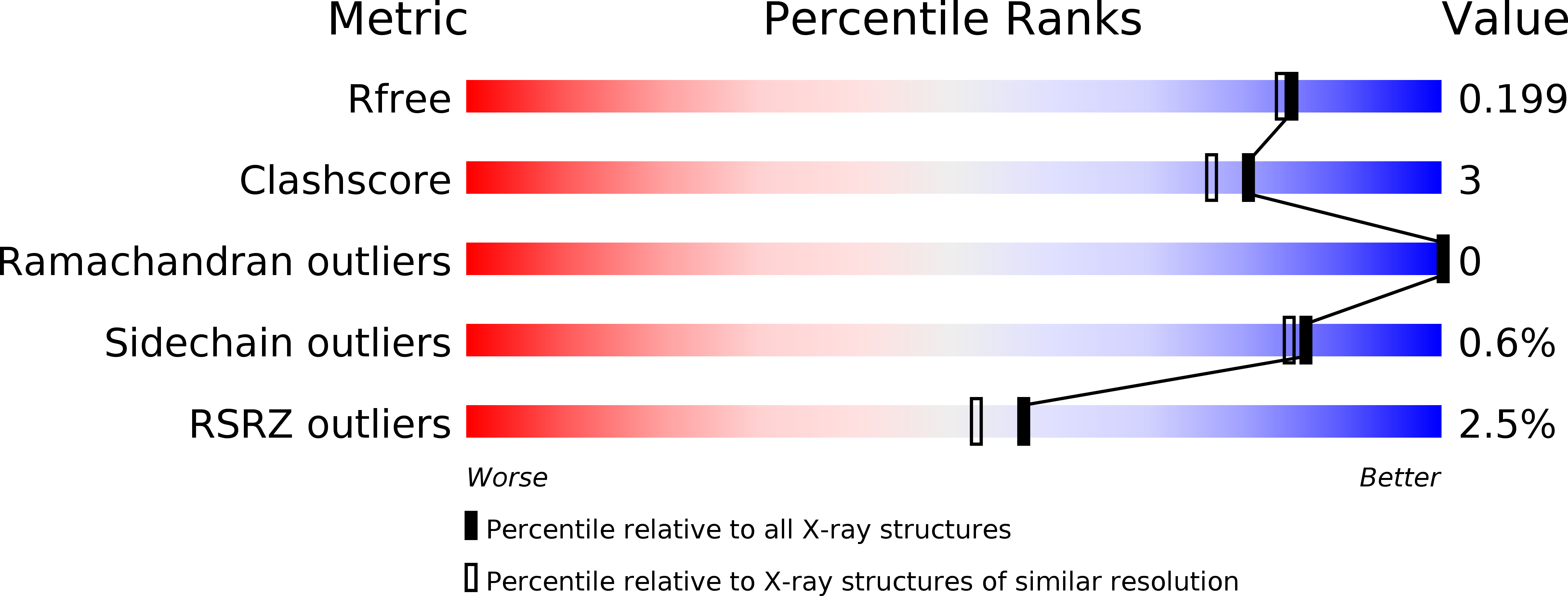
Deposition Date
2016-07-01
Release Date
2017-05-10
Last Version Date
2023-11-08
Entry Detail
PDB ID:
5GJO
Keywords:
Title:
Crystal structure of SrLDC mutant (A225C/T302C) in complex with PLP
Biological Source:
Source Organism:
Selenomonas ruminantium (Taxon ID: 971)
Host Organism:
Method Details:
Experimental Method:
Resolution:
1.80 Å
R-Value Free:
0.19
R-Value Work:
0.16
R-Value Observed:
0.17
Space Group:
P 21 21 21


